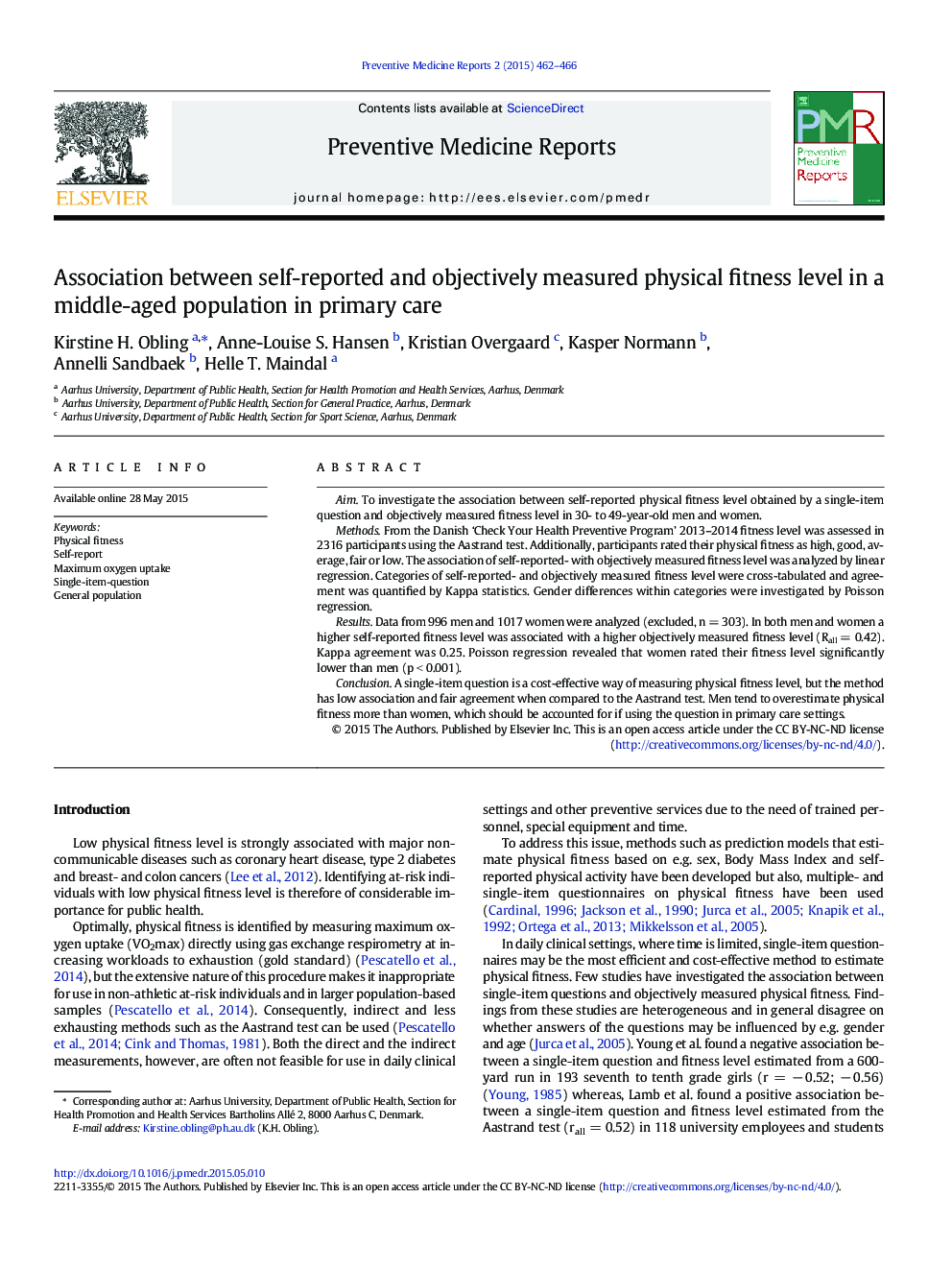| Article ID | Journal | Published Year | Pages | File Type |
|---|---|---|---|---|
| 4202454 | Preventive Medicine Reports | 2015 | 5 Pages |
•A higher self-reported fitness level was associated with a higher objectively measured fitness level.•The agreement between self-reported- and objectively measured physical fitness level was fair.•Both men and women overestimated physical fitness level although more pronounced in men.
AimTo investigate the association between self-reported physical fitness level obtained by a single-item question and objectively measured fitness level in 30- to 49-year-old men and women.MethodsFrom the Danish ‘Check Your Health Preventive Program’ 2013–2014 fitness level was assessed in 2316 participants using the Aastrand test. Additionally, participants rated their physical fitness as high, good, average, fair or low. The association of self-reported- with objectively measured fitness level was analyzed by linear regression. Categories of self-reported- and objectively measured fitness level were cross-tabulated and agreement was quantified by Kappa statistics. Gender differences within categories were investigated by Poisson regression.ResultsData from 996 men and 1017 women were analyzed (excluded, n = 303). In both men and women a higher self-reported fitness level was associated with a higher objectively measured fitness level (Rall = 0.42). Kappa agreement was 0.25. Poisson regression revealed that women rated their fitness level significantly lower than men (p < 0.001).ConclusionA single-item question is a cost-effective way of measuring physical fitness level, but the method has low association and fair agreement when compared to the Aastrand test. Men tend to overestimate physical fitness more than women, which should be accounted for if using the question in primary care settings.
